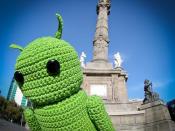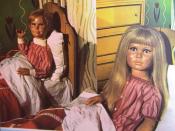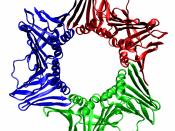The setting is a small college's biology class where only three students out of twenty students have come to class because it is the last day before spring break begins. The three students' names are Andy, Kristen, and Eric. Seeing only three students in the class, the professor changes his lecture material into a class discussion involving the recent scientific breakthrough in the field of cloning. During the discussion, the professor explains how the cloning of a sheep named Dolly was done. In addition, the students and the professor share their views on the advantageous and the detrimental side of cloning either humans or animals.
Professor: Good morning class! I am sure that you all have heard about the recent scientific discovery in the process of cloning. If not, allow me to fill you in on this current controversial scientific discovery. Last week, a Scottish scientist named Dr. Ian Wilmut from the Roslin Institute in Edinburgh, Scotland, successfully cloned an adult sheep.
I said adult sheep because scientists already have the ability to clone sheep and calves, for farming purposes, from undifferentiated embryonic cells. Is there any questions so far?
Kristen: Um, yes, professor. Would you please elaborate on the term undifferentiated cell? Also, the word cloning sounds like something you would hear from science fiction movies or novels--isn't the cloning process very complicated?
Professor: To answer your first question, Kristen, an undifferentiated cell is a cell that has the ability to create other specific cells, such as skin, hair, brain, and muscles, as it activates certain genes on chromosomes. For your second question, the concept of cloning is really not that complicated to understand. Allow me to explain as I split Dr. Wilmut's cloning process into three steps. During the first step, udder cells from a six-year-old Finn Dorset...



Clone
I like this different approach I found this interesting. Although I did have trouble reading it and read it over 2 or three times untill it sunk in.
0 out of 0 people found this comment useful.